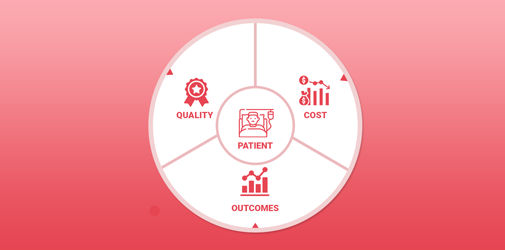ASHOK MUTTIN | JUNE 14, 2021
Healthcare’s Bermuda Triangle: 4 reasons
healthcare organizations struggle to
understand - and adjust -
their CQO variables
by Ashok Muttin, CEO, SupplyCopia
What’s the biggest challenge faced by healthcare organizations today? I’d argue it’s in gaining visibility to – and being able to adjust – the variables that drive Cost, Quality and Outcomes (CQO) across service lines and procedures.
For example, if we switch out one supply for another in a case, say a different manufacturer/brand knee implant, or use more or fewer ancillary supplies (e.g., antibiotic bone cement) what will this do to clinical and financial outcomes for that procedure?
Are there dials we can turn to reduce costs and improve patient outcomes at the same time?
I believe there are several factors creating sort of a Bermuda Triangle around understanding – and adjusting – CQO. Here are the four top factors:
1. First, data. It’s everywhere, stashed in systems throughout your organization. It’s not standardized nor is it consistently classified.
Historically, there’s been no way to easily, quickly and accurately aggregate supply chain, clinical, financial and quality data and analyze it in a timely manner, much less deliver it back to stakeholders in clear ways that enable “tuning” of CQO variables.
2. Second, the battle of physician choice versus standardization. We know the story. Physicians want to use what physicians want to use, and it makes sense. They share a common goal of wanting to ensure patients get the best possible outcomes.
At the same time, the supply chain is working hard to reduce costs, and one of the ways to do that is through standardization and improving vendor selection and contract utilization. A key problem is that healthcare hasn’t had the data to prove the link between supply selection and its impact on patient outcomes.
Without this data, alignment between physician and supply chain goals is pretty much impossible.
3. Third, reimbursement rates. The bane of every healthcare leaders’ existence. Even though patient care can be exceptionally well delivered, reimbursements continue to decline, and government-funded care makes covering costs even more difficult. In many cases, hospitals are losing significant dollars on what should be revenue-generating procedures because costs are too high and payer reimbursements too low. Therefore, you’ve got to understand the CQO variables that can be adjusted to sustain operations. (“No margin, no mission,” as Dr. Michael Rose, Chief Innovation Officer at McLeod would say.)
4. Finally, the lack of visibility means a black hole in making CQO adjustments. While physician preference cards tell you what a physician planned to use in a procedure, what they don’t tell you is what the physician actually used.
What you need is consumption data – the supplies each surgeon used (not wasted or sent back to inventory) during each case. From there you can conduct an analysis to determine which supplies/supply combinations deliver best outcomes at the lowest costs.
With this data, we’ve helped build a Bill of Materials that says, “here are the products that you’d need to complete ‘Procedure X,’ 90-95% of the time.”
In this way you can standardize on items that drive improved clinical outcomes for your patients and financial outcomes for your organization.
You will also uncover gaps in your processes – for example, you may be missing the billing of major items that drive reimbursement.
Ready to take steps to drive your CQO initiatives forward? SupplyCopia is ready to help. Reach out anytime — we’ll get right back to learn more about your current state of cost, quality and outcomes.
More from SupplyCopia



 ALL Solutions
ALL Solutions 
